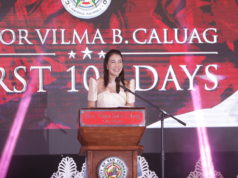PRELIMINARY OBSERVATIONS
In 1511, the Western world (represented by Portugal) stepped on Southeast Asian territory for the first time. Among the places which it subsequently covered with the veil of European influence were Java and Sumatra and, up north, together with the rest of the Philippines, the province of Pampanga. Pampanga was invaded and conquered by Spain in 1571.
Before it was covered with the heavy curtain of Spanish culture, how did the Pampangan image look like? This question was answered by John A. Larkins in his well-acclaimed pioneering work (Larkins1972), but he leaves ample space for a more thorough treatment of the topic. One productive exercise not yet done to date , for example, is to compare pre-Spanish Pampangans with pre-Portuguese Javans and Sumatrans. This, precisely, is what the present essay will do as a modest contribution to the fast-growing trend of regional historiography in the country. (See Tan 1977: 5-11; and Foronda 1977: 12-18).
The following discussions, where one Filipino ethnic group is singled out for the spotlight, unfortunately carry the danger of arousing the divisive spirit to which we Filipinos not infrequently succumb. But, most certainly, it must not do so. A deeper knowledge of any portion of the country should, on the contrary, cause a deeper love for the whole nation and, consequently, for the other constituent parts of the nation. It is presumably in this spirit that several scholars belonging to other provinces or regions here have, in the recent past, published authoritative articles and books on their respective groups.
The comparative analysis done in this paper touches almost exclusively on linguistics and religion. And the treatment does not claim to be exhaustive. It is, rather, merely an exploratory step. The reason for this limitation is the scarcity of authoritative sources presently available to this writer. It is hoped that the day will come when the availability of such sources will bring the concepts contained herein from the “desert” of probability to the “promised land” of certitude.
[Kening artikulung ini (SLU- 1984), mamie kung katibayan (authoritative sources) a magpatutu king nanu mang sabian kung kailangang pamatutuanan. At ibat ketang 1984 a ita, penikuanan kung tumipun “authoritative sources” o katibayan a magpatutu king nanu mang sabian ku ketang babalakan kung isulat a “kasalesayan ning Kapampangan” a ini. Iyan metung yang sangkap ning akmang pamanaliksik at pamaniulat kasalesayan: one of the principles of historiography].
[Itang artikulung SLU-1984 mistula yang bini (seed) a pinla ku king gabun at, kaibat ning atlung pulut limang banua (1984 to 2019), metung neng mistulang tanaman a mamunga].
(Abatan ya ing kasuglung)




